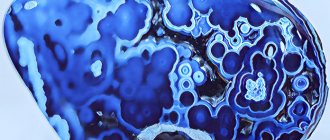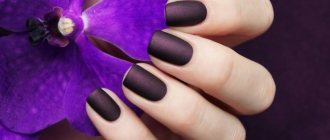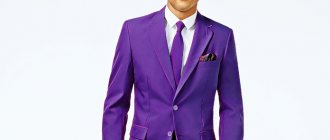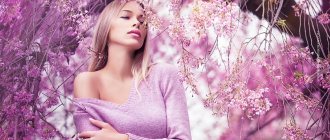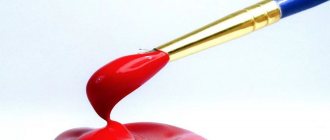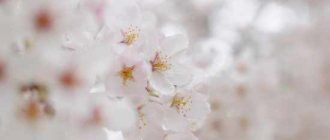Yellow is the brightest color in the visible spectrum that is most visible to the human eye. It is believed to affect the left side of the brain, where deep thinking and perception reside.
Yellow is the most sensitive color to the eye.
What does yellow mean: symbolism, color characteristics
- Yellow color is a symbol of movement, joy and fun; it evokes positive emotions, pleasant memories in a person, and activates mental activity. This color seems to have absorbed the sun, warmth, and fields of life-affirming blooming sunflowers.
- It’s as if someone with a light hand imbued him with brightness and activity, and with these qualities he is able to charge a person with energy, make him move forward to new achievements. When you see an optimistic yellow color with a drop of gold, your mind immediately draws a parallel with wealth, intelligence, and energy.
- But, despite all its positivity and optimism , yellow also contains some negativity. It seems to be a kind of synonym for greed and greed, and sometimes also for betrayal, jealousy, envy, and meanness.
- There are Asian countries where yellow means death and mourning. Brazilians believe that yellowness symbolizes despair. The Chinese love yellow, because in their interpretation it means empire and splendor. For Russians, it most often reminds them of betrayal or separation.
- Yellow is one of the three main colors of the spectral palette, actively participating in the emergence of all other shades.
Negative
Positive
Shades of yellow
There are 136 shades of yellow in total. But they are all conventionally divided into warm and cold tones. Warm shades have an admixture of red, and cool shades have an admixture of green. Main variations of yellow:
Citric
Symbolizes vigor, activity, morning awakening.
Honey
Associated with autumn warmth, pleasant memories, home comfort and well-being.
Sand
Invokes dreams of relaxing on the sea beach. Symbolizes carelessness and idleness.
The meaning of yellow in psychology
- Psychologists have concluded that the color yellow is primarily associated with intellectual activity, with the human mind. During numerous studies, they proved that yellow, like no other color, can actively influence those parts of the brain that are responsible for thinking and memory.
- If a person systematically perceives the color yellow in moderate doses, then his mental performance increases , he remembers more information, and his brain processes intellectual operations faster. From this it was concluded that the color yellow is able to actively participate in learning, because next to it a person can more effectively and easily absorb information.
- With the help of yellow, not only the work of the mind is accelerated, but also feelings are heightened, and the negativity that undermines a person’s self-confidence disappears. It gives impetus to new and varied ideas, helps you concentrate faster and learn how to organize your work and leisure time correctly and profitably. Yellow color can increase ingenuity and cognitive interest in children.
Makeup and jewelry
The brighter the shade of the chosen outfit, the more time you need to devote to makeup. It is important that the face does not look pale against the background of bright clothes, but also does not look vulgarly painted.
Yellow color highlights all the imperfections of the skin, so you will have to pay special attention to your complexion. To create daytime make-up, use beige tones of eye shadow, brown mascara and eyeliner. For evening makeup, you can use bright or golden shadows, but it is important to overdo it with glitter.
Jewelry for a yellow dress can be chosen from white metal, pearls, and natural stones.
The effect of yellow on the psyche
- Yellow is a joyful , stimulating color that helps develop intelligence, memory and expressiveness. By moderately perceiving the color yellow, a person is able to quickly make the right decision, hear the opinions of others, generate ideas, and maintain an optimistic attitude.
- Yellow color, which has a sunny tint, encourages a person to take action, to some new deeds and achievements. If a person is surrounded by sunny yellow, he will not be able to stay in one place for a long time; he will strive for communication and creativity.
The meaning of shades
The general psychology of yellow highlights separate meanings for different shades. Main shade options:
- Citric. A bright color reminiscent of early morning, awakening and vigor. It helps you wake up faster in the morning and drive away the blues.
- Sand. The warmest shade, interest in which signifies the need for relaxation and comfort.
- Honey. It has an admixture of brown, so its darkish color can evoke memories of late autumn and boredom.
If a person chooses a specific shade for a long time, this may indicate a subconscious signal from the body about some need. Therefore, you need to pay attention to such mental cues and promptly help your body replenish wasted resources.
The effect of yellow on a person's mood
- Under the influence of the color yellow, nervous and excitable people quickly come into balance, while those prone to apathy and depression come out of the crisis, begin to act, create, and communicate with people.
- The mood improves, brain activity increases, the scope of worldview expands, and the ability to be creative also manifests itself - and all this can easily be activated by the color yellow.
- However, it should be noted that the color yellow in large quantities can be harmful to babies, since their fragile nervous system does not perceive it well, which is why they cry continuously and are capricious.
Positivity and joy
Pros and cons
The advantages include:
- honesty;
- dexterity;
- confidence;
- original mindset;
- justice;
- optimism;
- becoming independent;
- clarity of thinking;
- activity;
- susceptibility;
- happiness;
- joy;
- tolerance;
- Liberty.
Negative qualities include:
- sarcasm;
- intolerant character;
- absentminded mood;
- causticity;
- extreme criticality;
- lemon shade - cruelty;
- perfidy.
Impact of yellow color on human health
- With its positive, stimulating effect, the color yellow reduces and weakens chronic fatigue, apathy, intellectual exhaustion, mild depression - in this it becomes a kind of assistant to therapeutic treatment. With its help, a person’s functioning of the nervous system, gastrointestinal tract, heart and blood vessels improves.
- Yellow can improve memory , promote the production and outflow of bile, which absorbs and digests fats.
- But you still shouldn’t get too carried away with yellow, since its excess can negatively affect the nervous system and give impetus to the development of psychiatric diseases such as schizophrenia.
How does it affect a person?
As stated above, yellow is a warm color, but it has less impact on a person than, for example, orange or red. It also invigorates, but not as intensely. It also affects a number of physiological processes occurring in the body:
- improves vision;
- reduces blood pressure;
- improves the activity of the nervous system;
- helps increase muscle tone;
- normalizes breathing.
This color evokes a surge of positive emotions. It helps reduce fatigue and reduce nervous tension. In winter, shades of the yellow spectrum help cope with the lack of sun and vitamins.
What does it mean if a child loves yellow: craving for yellow in children and character
- If a child is most drawn to the color yellow, then this preference speaks of his extraordinary mind and imagination. Being still quite a baby, he prefers to spend time alone among his favorite toys, turning them into one character or another in his imagination.
- Typically, “yellow” children show a desire for creativity from an early age . Such children are often characterized by excessive daydreaming, but they are distinguished by obedience. Sometimes they linger so much in their fantasy world that returning to the present is given to them with some difficulty.
- Such dreamers, storytellers and dreamers are extraordinary storytellers and inventors. Younger children and peers may be drawn to them, but they may also mock them. But don’t let this scare parents, since in the future they will most likely make a successful career, become recognized politicians, or occupy leadership positions.
- By his choice, the child seems to confirm the conclusion of psychologists: prosperity reigns in this family, and he is making progress in the educational institution he attends. If the child denies the color yellow, then this may indicate a tense home environment.
Fashionable looks
Using yellow things, you can create a wide variety of clothing ensembles.
Everyday looks
Casual yellow clothing is represented mainly by summer models. Light yellow dresses and sundresses should be complemented with bright sandals and silk scarves.
For autumn looks, it is better to choose clothes in yellow-orange and mustard tones. A dress of this tone can be combined with dark tights and shoes, with a gray or olive cardigan.
Yellow shorts look stylish; you can pair them with a bright blouse or lace top. Yellow summer skirts also look beautiful.
A piece that can spice up almost any everyday wardrobe is a yellow jacket. It can be worn with a dress, skirt or trousers. It is recommended to wear such a jacket with ensembles of restrained colors.
Evening looks
A yellow evening dress will allow you to become the star of any event. Depending on the shade and cut of the dress, you can create both a romantic and a distinctly sexy look.
What does it mean if a man loves yellow: craving for yellow in men and character
- Men who prefer yellow strive for leadership, victory, influence, and independence. And since this color is the most cheerful, then, most likely, a man dressed in yellow is a very “sunny” and optimistic person. Having a creative nature, such a man will seek the attention of the woman he likes using all sorts of imaginable and inconceivable methods, because his imagination can be limitless.
- Energetic, courageous, cheerful, sociable, dexterous and resourceful men can afford yellow things They are distinguished by their intelligence and originality, sometimes they like to chat and gossip in their spare time, and they feel at ease in a new team.
- Lemon colors are usually used by people who want to be the center of attention. Men who prefer yellow usually successfully implement their plans and quickly make a career.
- Thanks to their activity , they are able to accomplish a lot of things in a short time, and thanks to their intelligence, politeness and charm, they are able to attract the attention of women. Being kind by nature, they always provide emotional support to those who need it. And thanks to their successful jokes, told at the right time and in the right place, they often become the life of the party.
We combine
Hardly anyone will dare to dress in yellow from head to toe. However, this color combines well with other tones. Here are the most successful combinations:
- With black . This is a spectacular combination of two opposite symbols (day-night, cheerfulness-sadness). You can use either color as a base. For example, wear a yellow jacket with a black dress. Yellow fabric with a black print, such as polka dots, looks impressive.
- With blue . This is a classic combination, but only if you choose a rich or dark shade of blue. A set with a dark blue bottom (skirt or trousers) and a bright yellow top (blouse or shirt) looks impressive. An element of a neutral color, for example, a beige jacket, will balance the combination.
What does it mean if a woman loves yellow: craving for yellow in women and character
- Women who prefer yellow are very sociable and open. But, despite the fact that they are very sociable, they usually “keep their emotions in check” and quickly cope with emotional unrest. Stupid people annoy them, but, like true intellectuals, they try not to show it.
- Possessing flexible thinking and good memory, they quickly make decisions, generate and implement new ideas. They are distinguished by activity, a certain adventurousness, energy, and flexibility of thinking. Despite the apparent ease, they purposefully and persistently build their careers.
- They have a sense of humor , but their jokes are softer and more gentle than those of men who love yellow. These active and confident women love to be the center of attention, and they expect admiration and worship from those around them. They have well-developed intuition and ingenuity, and therefore they often prevail in controversial issues.
- They cannot stand it if someone hurts their pride, catches them in deception, or drives them into a corner, so they have developed the ability to avoid unpleasant situations. Having found inner harmony, women in yellow who know their worth go through life with their heads held high.
What kind of people like the color yellow?
Lovers of this color are usually very open-minded. They do not like to dissemble, be hypocritical and pretend, but always say everything directly, trying to remain themselves in any circumstances. They also have excellent creative thinking, they are sociable and friendly with most people, they are prone to adventure, but they are excellent at avoiding trouble. They usually stand out in their company for their keen sense of justice.
In terms of career and personal success, people who like the color yellow usually achieve great heights. These are self-sufficient individuals who always know what goal they are moving towards at the moment. They calmly ignore unconstructive criticism, do not accumulate resentment and do not allow emotions to distract them from important matters. If a person suddenly realizes that he likes yellow things, this may mean that right now he is internally ready for significant positive changes in his life.
What does the color yellow mean in clothes: psychology
- The yellow color, by its mere association with the sun, carries positivity . People who have a cheerful and sociable nature and have achieved inner harmony like to wear yellow things. These are the characteristics of the human psyche: it identifies the color yellow with comfort, generosity, and hospitality.
- That is why people dressed in yellow are subconsciously perceived by others with friendliness and sympathy. So if you want to please someone, then you should dress in yellow things (this can also be things with a yellow print), or decorate yourself with accessories of a similar color. It would be a good idea to buy something yellow for yourself to wear in cold weather and during long rainy periods.
- This measure will help you not to lose heart, but, on the contrary, to replenish your vital energy. The color yellow contains enormous “energy”; it quickly warms you up, but it can also quickly tire you out. The fastest way to achieve this effect is with bright shades of yellow - so everything is good in moderation.
- It is also worth noting that despite all its positivity, yellow clothes are not suitable for a business look. For example, you should not go through an interview, take exams, conduct business negotiations or other official events wearing all yellow, as others may think that you want to show your superiority. But yellow accessories won't hurt.
In clothes
Negative effects of color
The well-known saying that everything is good in moderation is also true for the color yellow. Its excess can lead to a joyful mood developing into overexcitation of the nervous system and irritation, which in turn can result in outbursts of unmotivated aggression. Too much bright sunlight causes fatigue, dizziness and migraines. Therefore, a room with an abundance of yellow, which initially seemed so warm and bright, will want to leave quickly.
Important! Regular long-term contemplation of a dazzling yellow color can provoke the development of dormant diseases of the nervous system, for example, schizophrenia.
What does yellow color mean in eyes and hair: psychology
- You rarely meet people with amber-yellow eyes, so such meetings are remembered for a long time. There is a popular belief that a person with unusual and dangerous habits can have an amber iris.
- In biology, psychology and folk wisdom, there are different interpretations of this unusual coloring of the iris. In fact, a substance called lipochrome . Thanks to this pigment, the eyes of many predators are colored yellow, and this helps them in hunting - due to the large amount of lipochrome, they see better and further.
- It is precisely because of this parallel with the animal world that in popular beliefs amber eyes are called the “eye of the tiger,” and if a person has “tiger” eyes, then he is unpredictable and capable of dangerous adventures. In the scientific world, all this is considered prejudice: scientists claim that genetics is most involved in eye color.
- The owners of amber eyes most often become mestizos who have the Asian gene. However, psychologists have noticed that yellow-eyed people have considerable similarities with each other. They are distinguished by perseverance, breadth of soul, devotion, ingenuity, great neuropsychic energy and willingness to take risks.
- Blondes and blondes with a yellow tint can safely be called sunny people . They are able to energize others with their inexhaustible energy, so they often become the life of the party. They have well-developed intuition and ingenuity, and despite their apparent openness, they keep silent about a lot of things. What thoughts are wandering in their heads - only they themselves know about it. Yellow-haired people are purposeful, therefore they are able to achieve a lot in this life.
What does a yellow aura mean?
- If a person has a yellow aura, then we can say that he has a light and cheerful character. Strength and energy seem to splash out of them, and it seems that everyone else is also charged from them, as if from an eternal battery.
- A yellow aura will tell you that its owner is a highly intelligent, logical person who constantly strives for self-improvement. However, such people are not at all arrogant or arrogant.
- On the contrary, they are distinguished by modesty and restraint and never show their superiority over others. Yellow people have a good sense of humor, and thanks to their flexible thinking, friendliness and charisma, they usually achieve everything they dream of.
What does the color yellow mean in esotericism?
- Yellow psychic energy is considered to be energy of the highest order because of its radiance, calmness, light, iridescence and gentleness. If there is a golden tint in a person’s aura, this means that he carries a piece of divine energy and can share it with other people - they seem to warm up in its rays. So, carriers of a golden aura have a mission in this world - to charge others with their positive energy. People with a golden aura have a strong and healthy psyche.
- But with poisonous yellow, the situation is unimportant, since it is a sign that psychic energy is polluted by someone. It seems that a person with an aura of this color was given some kind of artificial program in order to manipulate him. His consciousness and behavior changes dramatically under the psychological influence of a person endowed with extrasensory abilities, and sometimes even otherworldly entities.
- People knowledgeable in esotericism can determine the time and place of occurrence of such dependence. Any magical intervention, such as damage, love spell, lapel, curse , etc. accompanied by a sharp surge of psychic energy. At a subtle level, each such burst is visible as an artificially created entity or thought form, the edges of which are painted in a poisonous yellow color and they are clearly limited. The presence of such a bad shade in the aura means that a person has a mental illness.
Choice of stars
Cheerful yellow is perfect for special occasions. Bright dresses in sunny or golden shades look great against the backdrop of the red carpet, which is why many celebrities choose these shades for their outfits. At various times, such famous style icons as Angelina Jolie, Shakira, Anne Hathaway and others appeared in public in yellow outfits.
What does a yellow car mean?
- Few of us would prefer to buy a yellow car for ourselves. But such people exist, however, statistics say that there are very few of them - only 0.4%.
- Psychologists say that these are true optimists, distinguished by sociability and good nature. We intuitively identify the color yellow with joy and happiness. And its lovers know how to be happy and lucky; they are able to see positive aspects even in the negative.
- The driver, driving a yellow car, understands perfectly well that he attracts the attention of others by being different from others. But he has a cheerful disposition and a good sense of humor - so everyone’s attention does not bother him. On the contrary, he is proud of his yellow “friend” on wheels.
- By the way, yellow cars are the safest vehicles on the roads, as they have the most noticeable coloring.
Origins of color
The word “yellow” is phonetically related to such words as “green”, “ash”, “gold”, “yolk”, “bile”. Not everyone realizes that the yellow tone is “related” to green. Yellow color is often identified with gold. The word of Germanic origin “gold”, which translates as “gold”, has a common root with the word “yellow”.
The color system was first created by Leonardo da Vinci. He was convinced that yellow belongs to the six primary colors. Isaac Newton later established that only three elements are basic in the color palette. These are yellow, red and blue colors. When mixed, they create all other shades.
In ancient times, although people revered the yellow (sunny) color, they considered it only a complement to purple (a mixture of red and blue)
What does yellow mean in a bouquet of flowers?
For Russians, the meaning of yellow flowers is the most controversial. Some people believe that they mean a quick separation, while others, on the contrary, believe that they are a symbol of happiness. Which one is right? Of course, the second!
- Well, these sunny flowers cannot symbolize any misfortunes or troubles, it’s just that popular singers put this idea into people’s heads with their hits. This color is filled with vital energy, sun, gold, ears of wheat, candle flame, autumn leaves.
- It contains joy, happiness and warmth , and, taking into account all these components, yellow flowers can be safely given to everyone with whom you want to share a piece of your warmth. A cheerful bouquet can please anyone in any season; children will especially admire such flowers.
- Drawing an analogy with sunlight, yellow spring flowers are associated with joy, care, trust, and love. Happy autumn - with health, wisdom, mature love, family well-being. With gold - with the brilliance of wealth, success, prosperity, intelligence, ambition.
- Let's try to dispel all prejudices about sunny flowers. Even in paganism, the Slavs considered the dark yellow color to be a kind of synonym for betrayal, inconstancy, betrayal, jealousy and envy. But golden yellow had a completely opposite meaning: this color symbolized nobility, dignity, sun and divinity.
- Since it became fashionable in Russia to use the language of flowers, the negative symbolism of the palette was transferred to these beautiful representatives of the world of flora. For example, yellow hyacinth was used to let a partner know about their jealousy; a yellow rose - that he was caught in treason; yellow chrysanthemum - that love is no longer as strong as before. But even in the old days, there were never any signs regarding yellow flowers and separation.
Sunny bouquets
Psychology of color. Symbolism of color. Color and character. Color and performance.
The symbolism of color has a long history. Since time immemorial, people have attached special importance to reading the “language of colors,” which is reflected in ancient myths, folk tales, fairy tales, and various religious and mystical teachings. Thus, in astrology, the rays of the Sun, arranged in a spectrum and giving 7 colors, corresponded to 7 main planets: red - the color of Mars, blue - the color of Venus, yellow - the color of Mercury, green - the color of Saturn, purple - the color of Jupiter, orange - the color of the Sun, purple is the color of the moon. At the same time, the colors symbolized not only the planets and their influence, but also the social status of people, their various psychological states. This was manifested in the selection of clothes of certain colors, folk sayings, rituals, etc. Different peoples have developed a certain symbolism of colors that has survived to this day.
Thus, since ancient times, people have shown a special interest in the color red. In many languages, the same word means the color red and, in general, everything beautiful and beautiful. Among the Polynesians, the word "red" is synonymous with the word "beloved." In China, a sincere, frank person is said to have a “red heart,” while the heart of a bad, treacherous person is black. The color red is primarily associated with blood and fire. Its symbolic meanings are very diverse and, at times, contradictory. Red symbolizes joy, beauty, love and fullness of life, and on the other hand - enmity, revenge, war. Since ancient times, the color red has been associated with aggressiveness and sexual desires. Red is the main heraldic color. On the banner it symbolizes rebellion, revolution, struggle. It is interesting that among many tribes in Africa, America and Australia, warriors, preparing for battle, painted their bodies and faces red. The Carthaginians and Spartans wore red clothing during war. In ancient China, rebels called themselves “red warriors,” “red spears,” “red eyebrows.” Red also signifies power and greatness. In Byzantium, only the empress had the right to wear red boots. The emperor signed in purple ink and sat on a purple throne. For many peoples, the color red symbolizes the south, flame and heat. White color symbolizes purity, spotlessness, innocence, virtue, joy. It is associated with daylight, as well as with the productive force, which is embodied in milk and eggs. Associated with whiteness is the idea of the obvious, the conventional, the legitimate, the true. In ancient Rome, Vestals wore white dresses and white veils. Since antiquity, the color white has had the meaning of detachment from the worldly, striving for spiritual simplicity. In the Christian tradition, white denotes kinship with the divine light. Angels, saints and righteous people are depicted in white. Among some peoples, kings and priests wore white clothes, which symbolized solemnity and grandeur. However, white can also have the opposite meaning. By its nature, it seems to absorb, neutralize all other colors and correlates with emptiness, incorporeality, icy silence and, ultimately, with death. The Slavs dressed the dead in white clothes and covered them with a white shroud. It is customary among some tribes in Africa and Australia to paint the body with white paint after the death of someone close to them. In China and some other countries in Asia and Africa, white is the color of mourning. In the old days, white mourning was also used by the Slavs. Black color , as a rule, symbolizes misfortune, grief, mourning, and death. Thus, in ancient Mexico, during the ritual sacrifice of a person, the face and hands of the priests were painted black. Black eyes are still considered dangerous and envious. Ominous characters are dressed in black, whose appearance portends death. It is also believed that there is a connection between the color black and sexual attractiveness. Among some African tribes, women with very black skin are highly valued as lovers, but not as wives. Love passion is shrouded in darkness and mystery; therefore, black can symbolize something intimate and passionately desired. Among the Arabs, the expression “blackness of the eyes” means beloved, “blackness of the heart” means love. Thus, black can also have a favorable meaning. It is perceived this way, for example, in the arid regions of Africa, where there is little water and black clouds promise fertility and abundance. Black bulls, goats or birds are sacrificed to the guardian spirits who send rain, and the priests also dress in black. Yellow is the color of gold, which since ancient times has been perceived as a frozen solar color. This is the color of autumn, the color of ripe ears and fading leaves, but also the color of illness, death, the other world. Among many nations, women preferred yellow clothes. Often the color yellow served as a distinctive feature of noble persons and upper classes. For example, Mongolian lamas wear yellow clothes with a red belt. On the other hand, among some Asian peoples, yellow is the color of mourning, grief, and sadness. In Europe, a yellow or yellow-black flag meant quarantine, and a yellow cross meant plague. Among the Slavic peoples, yellow is considered the color of jealousy and betrayal, and in Tibet jealousy is literally called “yellow eye.” Let us also remember the “yellow press” and the “yellow house”
, the color blue symbolizes heaven and eternity. It can also symbolize kindness, fidelity, constancy, favor, and in heraldry it denotes chastity, honesty, good reputation and fidelity. "Blue blood" speaks of noble birth; The English call a true Protestant a “blue.” In addition, the color blue is close to black and receives similar symbolic meanings. It was considered mourning in Ancient Egypt and among some peoples of South Africa. The French call horror “blue fear” (remember the fairy tale about “blue beard”. Among the Slavic peoples, blue served as the color of sadness, grief, and was associated with the demonic world. Ancient legends describe black and blue demons. Green is the color of grass and leaves. For many peoples it symbolizes youth, hope, fun, although sometimes immaturity, insufficient perfection. Green is an extremely material color and has a calming effect, but can also produce a depressing impression (it is no coincidence that sadness is called “green”, and the person himself “turns green” with anger). Iranians associate the color green both with rapid growth and freshness, and with misfortune, sadness, grief, so they say about an ill-fated person “green leg”, and about a cemetery - “green house.” In medieval Europe, jesters wore green and yellow clothes, and bankrupts in Germany had to wear green caps.
The ancient symbolism of colors and their interpretation in various cultures is confirmed in modern theories of the relationship between color and emotional-volitional states not only of an individual, but also of entire communities. The correspondence between color and the dominant psychological state was studied by M. Luscher, I. Goethe and other psychologists. Today, flower symbolism is widely used in business advertising. Psychologists have found that blue, gold, white, black, red are colors that can be used to identify a product with the elite segment, since these are “expensive” colors that have been identified with the elite of society for centuries. Indeed, in goods in the upper price range, the combination of blue or black with gold is very common. Black color allows you to effectively highlight a logo (made, for example, in gold) or an image of the product itself. This is done in order to concentrate the consumer’s attention not on the packaging, but on the product itself, to show its significance and prestige. For example, this technique is used by many producers of expensive alcoholic beverages, in particular Johnny Walker and Black Label whiskey, Comus or Martell cognac. This way the name of the product stands out and emphasizes that this is an elite drink. The same approach is practiced when creating expensive perfumes and colognes for men. If the colors of the premium segment should be associated with confidence and solidity, then the combination of red and yellow, on the contrary, is associated with a feeling of joy, warmth, and fun. It is no coincidence that these two colors are used by the “folk” restaurants McDonald's and Lipton tea. Green and blue, which are considered the colors of May morning, have their own associations. They are usually used to show the freshness of the product. There are also colors that are strictly forbidden to be combined with each other, as they evoke negative emotions in the consumer. For example, a combination of purple and orange speaks of hopelessness and suicide. The same effect is caused by an inscription written, for example, in white letters on a dull black background.
Color and character
Each person gives preference to one color, at least no more than two or three (depending on where these colors are used - in clothing, furnishings, car color, etc.). The pleasant or unpleasant feeling that a particular color evokes can change over time. But in any case, the color you prefer can tell a lot about your character and emotional makeup. Psychologists in such cases use a color test developed by Swiss psychologist Max Lüscher in the late 1940s. The Luscher test, used by professional psychologists, requires special training for its use. The “lighter” version of the Luscher test can be easily tested by anyone, using the usual settings of a modern color TV.
Psychologists say : if red color predominates, then the owner of the TV is trusting, but overly emotional and aggressive. If yellow stands out clearly, then such a person inspires confidence in others, is an optimist and expresses friendliness. But the constant smile on his face is most often a mask behind which hides strong internal tension. The predominant blue-green color indicates that the person is timid and weak, but dangerous if someone gets in his way. And finally, those who prefer light blue are accommodating, lazy and do not know moderation in food and drink. An experienced observer may also be able to provide additional information about a person by their preferred color of car. As proof of this, we can cite data from the American psychologist Berthold Schwartz, who claims that the color of a car can be used to judge some of the psychological characteristics of its owner. Thus, the owners of red and yellow cars are optimists, lovers of life and consider themselves happy. Green ones are worn by nature lovers and realists. Blue is chosen by people with a balanced character. Owners of white cars adhere to conservative views, while business people drive black ones. Gray and silver ones are to the taste of proud people, and brown ones are preferred by respectable spouses and fathers of large families.
Below is a description of the main colors. Based on the preference for one color or another, everyone can independently draw a conclusion about their psychological characteristics.
- white is a synthesis of all colors, which is why it is the “ideal” color. It contains a significant meaning, since it simultaneously conveys the brilliance of light and the coldness of ice. This color can be preferred by a person with any character; it does not repel anyone;
- black is the color of uncertainty, symbolizing a gloomy perception of life. Anyone who prefers to dress in black often perceives life in dark colors, is unconfident, unhappy, and prone to depression, because he has no doubt that his ideals in life are unattainable. Frequently changing a black suit or dress to another, brighter, catchier one, indicates that pessimistic moods often dissipate. The constant choice of black indicates the presence of a certain crisis state and characterizes aggressive rejection of the world or oneself (remember the black banners of anarchists). Children who are acutely experiencing a lack of care and love often use black shading in their drawings. Normally, black is generally rejected;
- gray is the favorite color of sensible and distrustful people who think for a long time before making any decision. It is also a neutral color favored by those who are afraid to make a statement too loudly. If you don’t like this color, then this is an indicator of an impulsive, frivolous character. Often, gray color is also preferable in case of severe overwork as a barrier, fencing off the irritants of the outside world. In situations of psychological testing, this color is used as a means of protection against the penetration of another into the inner world of the subject. A study of about two thousand young men in a situation of competitive examinations for vacant positions showed that the color gray was put in first place by 27% of the examinees instead of the usual 5% in a normal situation;
- red is the color of passions. If this is your favorite color, then such a person is brave, he is a strong-willed, domineering type, quick-tempered and sociable. Moreover, he is an altruist. People who are irritated by this color have an inferiority complex, fear of quarrels, a tendency towards solitude, stability in relationships. The red color symbolizes excitement and energy. This color is also a symbol of eroticism. Disgust and ignoring red reflects organic weakness, physical or mental exhaustion. Prisoners of war, forced to live for years in life-threatening conditions, were especially likely to reject him. Red is the color most preferred by teenagers;
- brown - chosen by those who stand firmly and confidently on their feet. People who have a soft spot for him value traditions and family. The preference for brown reflects, first of all, the desire for simple instinctive experiences, primitive sensual joys. At the same time, the choice of this color as the most preferred also indicates a certain physical exhaustion. Normally, along with black, brown is the color most often rejected;
- yellow - symbolizes calmness, ease in relationships with people, intelligence. Being loved means being sociable, curious, courageous, adaptable, and enjoying the opportunity to please and attract people. When he is unpleasant, then we are talking about a concentrated, pessimistic person with whom it is difficult to establish an acquaintance. Yellow comes from mixing green and red and is the color of energy. The greatest preference for yellow is given to pregnant women expecting a successful outcome of childbirth, as well as people who are prone to changing places. Yellow is also interpreted as the color of illumination (the halo of Christ or Buddha);
- blue is the color of the sky, peace, relaxation. If you like him, then this speaks of modesty and melancholy; such a person often needs to rest, he gets tired quickly, a sense of confidence and the goodwill of others is extremely important to him. The rejection of this color reveals a person who wants to give the impression that he can do anything in the world. But, in essence, he is a model of uncertainty and isolation. Indifference to this color speaks of a certain frivolity in the field of feelings, although hidden under the guise of courtesy. In short, choosing blue as the most preferred color reflects a person's physiological and psychological need for peace, and denying it means that a person avoids relaxation. When ill or overworked, the need for blue increases;
- green is the color of nature, nature, life itself, spring. The one who prefers it is afraid of other people's influence, looking for a way to assert himself, since this is vitally important for him. Anyone who does not love him is afraid of everyday problems, the vicissitudes of fate, in general, all difficulties. The color green contains hidden potential energy and reflects the degree of volitional tension, therefore people who prefer green strive for self-confidence and confidence in general. Eccentric people, who achieve their goals not through targeted volitional activity, but through emotions, reject green as an unattractive color. Along with them, green color is rejected by people who are on the verge of mental and physical exhaustion.
Other colors can also tell about the psychological characteristics of a person’s condition. Thus, orange is the favorite color of people with intuition and passionate dreamers. In heraldry, this color also means hypocrisy and pretense. Pink is the color of life, of all living things. He talks about the need to love and be kinder. Those who like him can become agitated over the most insignificant things. For people who are overly pragmatic, this color causes irritation. The color violet symbolizes the inherent infantility and suggestibility of a person, the need for support and support. In this sense, the choice or denial of the color purple acts as a kind of indicator of mental and sexual maturity. Research conducted by Russian psychologists V.F. Petrenko and V.V. Kucherenko, confirm the existing relationship between a person’s emotional states and his choice of certain colors as preferred. Thus, in situations of joy and fun, energy-saturated colors (yellow and red) are especially preferred, while the colors of peace and relaxation (blue and brown), as well as the color of non-existence (black), are simultaneously rejected. For situations where a person experiences a feeling of guilt for various actions, it is typical, on the contrary, to reject energy-saturated red and yellow and prefer gray and blue colors. Blue, therefore, reflects not only serene peace and relaxation, but in combination with gray corresponds to a state of passive depression. In situations that pose any danger to a person, there is a preference for green, associated with volitional tension, and yellow as energy-saturated, associated with the need for a quick release of tension. Moreover, if fear is characterized by a predominance of green and gray colors while rejecting yellow, red and violet, then aggressive arousal in response to danger is characterized by a combination of yellow and green while rejecting black and brown.
Color and performance. Currently, scientists are making active attempts to use the influence of color on human psychophysiology for commercial and domestic purposes. Moreover, as already noted, each person perceives color in his own way. Therefore, decorators and designers, when designing the interior of premises, must always take into account socio-demographic characteristics - gender, age, profession, etc. However, there are some general characteristics of the effects of flowers on humans. The predominance of any color (or combination of colors) in the design of a room creates a certain emotional and business environment. Few businessmen know that the color scheme of the interior affects the human subconscious. And not only on the performance of employees, but also on the results of business negotiations.
Thus, blue color promotes better assimilation of information and the establishment of friendly relationships, so it is recommended to be used in meeting rooms. And, it would seem, blue, which is close to it, on the contrary, distracts attention and reduces the efficiency of staff. So many managers don’t even realize that the reason for the sharp decline in their company’s commercial profit could well be... a chic European-quality renovation in the office, done in the now very fashionable “sky blue” style. Green color has a calming effect on the nervous system, relieves headaches, fatigue, irritability, and lowers blood pressure. Red increases the level of adrenaline in the blood, increases performance and is therefore especially recommended for slow, lethargic people. However, an excess of red and green at the subconscious level awakens a thirst for profit in a person, and red, among other things, increases aggressiveness (it is no coincidence that the red jacket became the symbol of the “new Russians”). Purple color improves the functioning of the heart and lungs, increases the body's endurance. Nevertheless, it should not be overused: this color is a subthreshold catalyst for fatigue. So if you want to buy a purple blouse, then it’s time to go on vacation. The transition in a room from yellow to blue is calming. People walk on a pink floor with caution, while on a brown floor they walk confidently. White luminescent color irritates the nervous system, and yellow-orange light from lamps promotes creative thinking and good mood. It has also been noted that in public places where color is limited to white, black and gray, people do not linger unless absolutely necessary. Colors can visually expand rooms (for example, yellow and yellow-green) or narrow them (red-orange). At the same time, in a red room it seems 3-4 degrees warmer than in an orange one, and in an orange room it seems 3-4 degrees warmer than in a blue-green room. Each color carries its own emotional load, which must be taken into account when stimulating work activity. Thus, the combination of red and blue-green colors stimulates overall performance. Yellow or yellow-green with orange relieves mental fatigue, and yellow alone promotes mental activity. Blue color is recommended in child labor rooms, pink in the welding shop, blue in the lathe. In general, when working, yellow-green tones in various combinations and shades are most optimal. During meals, orange-red tones are preferred, and during rest hours, it is not so much the tone that is important, but the dynamics of the colors. source: Internet; photo: Yandex.
What does yellow color mean in the interior: psychology
- Under the influence of yellow color, all other components of the spectrum seem to come to life. It adds dazzling brilliance to hot colors and even more freshness to cool colors. This is why most designers have chosen yellow as their favorite. Any room will become brighter and warmer if you add the color of the sun when decorating it.
- Very often the kitchen and dining room are decorated in yellow, as it increases appetite - this is the conclusion drawn by psychologists. And, as practice has shown, it works! But remember: too much yellowness is tiring. Muted tones of yellow can be conducive to relaxed conversation. And yellow with a tint of gold evokes thoughts of wealth and luxury.
- When decorating your interior, it is important to remember to maintain balance: small doses of yellow can create a happy atmosphere in your home. But from a long proximity to bright lemon, the brain can be overexcited, which makes a person become restless and cannot completely relax.
In the interior
In the interior In the interior
Using the warm spectrum in the interior
Yellow stimulates appetite. It will be useful for people with gastrointestinal diseases, but for those who are on a health-improving diet, it will be an additional irritant. A warm color spectrum is useful to use near the stove and cutting table - areas where food is cooked and not eaten. Then it will stimulate imagination and the desire to try new dishes.
In a children's bedroom, moderate use of yellow is acceptable. It stimulates the child’s psyche, so you need to decorate the work area with bright colors. And in the sleeping area you should choose softer colors.
It is useful to use yellow during sports or yoga: it increases physical activity. For an adult, it helps to increase muscle volume and make it easier to tolerate increased physical activity. If you cannot use yellow in the design of the walls, then you should at least choose furniture of a similar color.
Combination of yellow with other colors
- Yellow can be combined with absolutely every primary color - the color of the sun will not spoil any of them with its presence, but will only ennoble it.
Let's look at what comes out of merging two colors:
- Pink and yellow. This tandem gives the impression of light, femininity, and pleasure. With pastel colors, such a union can achieve a soft color contrast - it creates a warm effect. Medium and dark shades of pink create the appearance of dynamism and expressiveness.
- Red (burgundy) and yellow. As if merging in a passionate kiss, these colors create the appearance of brightness, festivity, and spontaneity. Such a riot of colors should be used with caution, as it can overstimulate the psyche. As the brightness of red increases, the expression and explosiveness of such a union also increases. Muted shades (dark, burgundy, cherry) can achieve a noble combination.
- Orange (peach) and yellow. In this related range, the basic tone is given depth and ardor. If you choose a darker orange, the contrast will be more obvious, while lighter ones will hold it back. Pastel combinations of peach and pale orange will add some romanticism and softness to the combination.
- Green and yellow. Combining yellow and warm green, you can achieve a pleasant effect of spring and sun. Looking at this combination, it is easy to imagine that the daylight is peeking through the dense forest greenery. Yellow-green colors contain goodwill and warmth, but at the same time there is also a particle of cold contrast. Cool greens, combined with yellow, can create a pleasant feeling of watery coolness on a hot summer day. This sonorous combination contains fun and richness; it is more likely to relax than to tone.
- Blue (cyan) and yellow. This combination provides the maximum contrast between heat and cold. It is this difference that brings fullness and grace to the union of two colors. The colors complement and highlight each other’s strengths, and this is why artists and designers fell in love with the lush tandem of yellow and blue. This palette is filled with bright drama, intense feelings and the eternal craving for opposites. Light blue tones emphasize femininity and tenderness, while dark blue tones are filled with idealism and originality.
- Violet (lilac) and yellow. This pair is the most expressive, since it is based on the principle of additional contrast (color rays, when mixed, acquire a gray color). A true creator is able to present this union of two colors so artistically that a person can feel: in front of him is complete harmony. It happens that in one of these compositions one can see flatness, clumsiness and even a certain obsession. The best thing is to combine the most muddy tones of both colors, then the impression of this union will be pleasant.
- Brown and yellow. From the union of brown and yellow colors, truly life-affirming compositions arise, since they have a family unity, natural beauty and deep light contrast. A calm, peaceful palette can be achieved with complex yellow, pale or dusty tones. Since nature is full of such shades, it is to them that we subconsciously gravitate.
- White (beige, gray) and yellow. The modesty of the base shade and the cheerfulness of yellow in tandem create a subtle, pastel palette. Such bows are usually filled with elegance, grace, and femininity. The more expressive the contrast, the more catchy and stylish the composition looks. If yellow predominates in such a pair, then it becomes light and airy, as if sunny joy managed to defeat the dull grayness.
- Black and yellow. This couple is flashy and dangerous, and at the same time chic, bohemian. You can be amazed by her, make you admire her. This combination contains brightness, catchiness, grace and expression.
Combination
Use in advertising and business
Yellow is the color that first catches the eye and stays in the memory for a long time. The most powerful effect on the psyche occurs when it is surrounded by other bright and saturated colors. Most often, yellow is used in combination with black. This is generally the most effective color combination, and the marketing gods use it successfully.
On all objects of increased attention you can find signs that combine yellow and black. It is impossible not to notice such symbols, because they contain both expression and aggression at the same time.
In the wild, bright colors serve as a warning and deterrent. Dangerous and poisonous animals wear bright and provocative colors. In the human world, the yellow-black combination is used on construction sites or roads, in emergency situations. You need to quickly attract attention even when in a hurry, for example, taxis are painted yellow.
The most readable composition, according to experts, is black font on a yellow background
Yellow color is easily visible to the eyes, even for visually impaired people. Sometimes yellow is combined with white. This is a combination of light and kindness, it evokes warm feelings. An example is a bouquet of daisies.
Yellow and bright green are used to lift the buyer's mood. They create a light, cheerful and summer atmosphere. It is not without reason that such shades can be found on the flags of exotic countries. But you can go overboard with these colors. If there are too many of them, it will cause irritation.
Yellow and blue are richness and depth. This contrast is often used for consumer products, as well as sporting goods.
Yellow combined with red gives a stunning effect. These colors enhance each other, providing an atmosphere of positivity, comfort and warmth. This is a very “friendly” combination. It is widely used in the entertainment industry.
Yellow color: interesting facts
- “Yellow press” began to be called some tabloids that publish unverified information (rumors, gossip) about celebrities in their materials. In 1894-98. The American newspapers “New-York Journal American” and “New-York World”, famous for their scandalous chronicles, published the comic strip “The Yellow Child” - hence the common name.
- People living in areas where nature has a lot of yellow colors and the sun shines all year round smile much more often than their “northern” antipodes.
- Since ancient times, the walls of hospitals for the mentally ill began to be covered with yellow paint - a couple of centuries ago they were called “yellow houses”. Psychologists have long noticed that yellow color calms and alleviates mental illness.
- In folk medicine, soft yellow light is used to treat eye diseases. There is an opinion among people that to improve vision, one should look at a burning fire and at the sun, which gradually sinks below the horizon, as often as possible.
- With their yellow robe, Buddhist monks demonstrate that they have renounced the world and all earthly goods and humbly serve for the glory of their deity.
- The painter Van Gogh simply adored all shades of yellow, and used them very often in his paintings. But the cold blue color scheme for the artist symbolized death and eternity.
- In the Middle Ages, the French painted the doors of houses in which traitors lived with yellow paint.
- Bright yellow clothes are most suitable for dark-skinned women.
- Green eyes are made more expressive and beautiful if a woman uses yellow in her outfit or decorates herself with yellow accessories - the main thing is that these accents are located near the face.
- If a person has the opportunity to admire the color yellow, then the production of gastric juice significantly increases and the functioning of the digestive tract improves.
- There are more than 130 shades of yellow in the world.
- Judas, who sold Christ for thirty pieces of silver, dressed in a yellow robe - at least that’s how he is portrayed. But, despite this, Orthodox iconography elevated the color yellow to the rank of a symbol of divine all-forgiving love and light.
- In ancient times, Japanese warriors attached a yellow chrysanthemum to their clothes before battle, which symbolized courage.
- Road signs and many product packaging are painted yellow - this is how they are most visible.
We will also talk about these colors:
- Green
- Red
- Blue
- Black
Yellow - beautiful and crazy
At the turn of the 19th and 20th centuries, the color yellow was increasingly associated with deception and betrayal due to the emergence of the stable expression “yellow press”. There are several versions of why the American press became “yellow,” but most often they cite the obvious fact: daily news was printed on the cheapest canary-colored paper.
At the same time, in Russia they began to issue certificates to prostitutes - “yellow tickets”. The mentally ill were sometimes dressed in yellow sweaters or tunics, and psychiatric hospitals were painted lemon color.
It is symbolic that the house that Vincent Van Gogh
in the south of France, was also yellow. But the artist gave this color a different meaning. Arriving in Arles, he wrote to his brother:
“I have never had such a wonderful opportunity to work. The nature here is incredibly beautiful! Everywhere, above everything, there is a marvelously blue sky and the sun, which streams a radiance of light greenish-yellow color... How beautiful yellow is!”
A passionate obsession with this color was expressed in the series “Sunflowers”, which he painted 11 times. The artist complained to his brother that the flowers faded very quickly, so he had to work in one session.
Van Gogh "Sunflowers" (1888).
Van Gogh used yellow chrome in his work. Over time, it turned out that this pigment is sensitive to light, so today museum curators face the difficult task of preserving the artist’s paintings.

